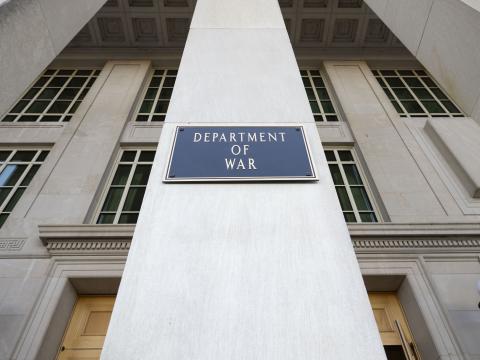President's Commentary: Why We Need a DISA
If the commercial sector is to be the source of military communications capabilities, why do we need a defense organization such as the DISA dedicated to providing information system services to the defense community? The answer lies in two words.
Most experts agree: defense information technologies increasingly will come from the commercial sector. Traditional contractors will continue to manufacture systems requested by the military, but now nontraditional firms will be providing the defense community with systems fueled by innovative capabilities. The result will be hybrid information systems and hardware that will owe their origin to the private sector.
So, if the commercial sector is to be the source of military communications capabilities, why do we need a defense organization such as the Defense Information Systems Agency (DISA) dedicated to providing information system services to the defense community? The answer lies in two words: defense and community.
No matter how innovative and effective commercial technologies may be, they still need to be vetted before they are turned over to the warfighter. This is accomplished in two ways. First, a government organization sets standards to ensure that the warfighter’s needs are met under combat conditions. Second, it ensures that the equipment being fielded is interoperable.
When companies design and build new commercial information technologies, their obligation is to their shareholders. On the other hand, DISA’s obligation is to the warfighter. As a combat support agency, it has a unique relationship with combatant commanders that includes offices and regional headquarters around the globe. This day-to-day interaction with the commanders would be difficult to replicate by any other means. In a lot of ways, DISA has become the operational arm of the combatant commanders.
And DISA does a great job of integrating capabilities, especially commercial ones. Its strength is that it is the integrator of warfighting C4 capabilities. As a government agency, DISA is an honest broker for fielding new technologies and systems. It can take commercial solutions and integrate them in a manner that supports warfighting capability. This ability is vital for both warfighters and decision makers. The agency doesn’t have a commercial bias or a solution bias. It looks for the best capability, and it represents that capability from a joint perspective.
DISA is taking commercial capabilities and turning them into military solutions. In its role as an evenhanded broker, DISA also serves as a technical gatekeeper to umpire the jointness or interoperability of different capabilities. Tony Montemarano, the outgoing executive deputy director of DISA, discusses these points on page 19 in this issue.
Part of this integration ability involves enterprise solutions. DISA can bring together global video services, voice over Internet protocol, enterprise email and command and control tools. These include the Global Command and Control System-Joint Enterprise (GCCS-JE), the Joint Planning Execution Service (JPES) and the Global Combat Support System-Joint (GCSS-J). With this portfolio, DISA has become a focal point for all things joint.
The need for this capability has its example in recent history. During the runup to the 1991 Gulf War, tactical telephone switches manufactured by two different firms turned out to be incompatible when they needed to be interoperable. Both companies interpreted the standards differently, so they designed and built them differently, lacking the required interoperability. With an agency such as DISA overseeing the hardware throughout its development, interpretation of standards can be verified, and that incompatibility can be avoided.
The agency also has a unique skill set. It has responsibilities spanning the range of nuclear command and control, satellite communications, and electromagnetic spectrum allocation. These include doing assessments on electromagnetic environment effects, deconflicting radio frequency (RF) energy and evaluating the hazards of electromagnetic radiation ordnance (HERO) services.
DISA brings it all together. The agency is the lead in adopting the commercial solutions on which everyone depends—and will depend on the future. It works with businesses to clarify requirements so industry can generate certified joint capabilities. The agency also examines systems from a risk-based test perspective and evaluates them for the force. Operational testing is another agency forte.
As a combat service support agency supporting combatant commanders’ requirements, DISA has more than proved its value in rapidly establishing communications and systems networking in remote and austere environments. It is the first call the joint community usually makes in times of need. Further, one should not overlook or forget the critical role DISA played after 9-11, working with the National Communications System in restoring communications to New York City and the National Capital Region.
As the Defense Department moves more strongly into the cloud, and the warfighter demands more networked capabilities, the importance of an agency that serves as a clearinghouse for commercial information technology is bound to increase. DISA has proved that it “does windows.” If we didn’t have a DISA, we would have to invent one.




Comments